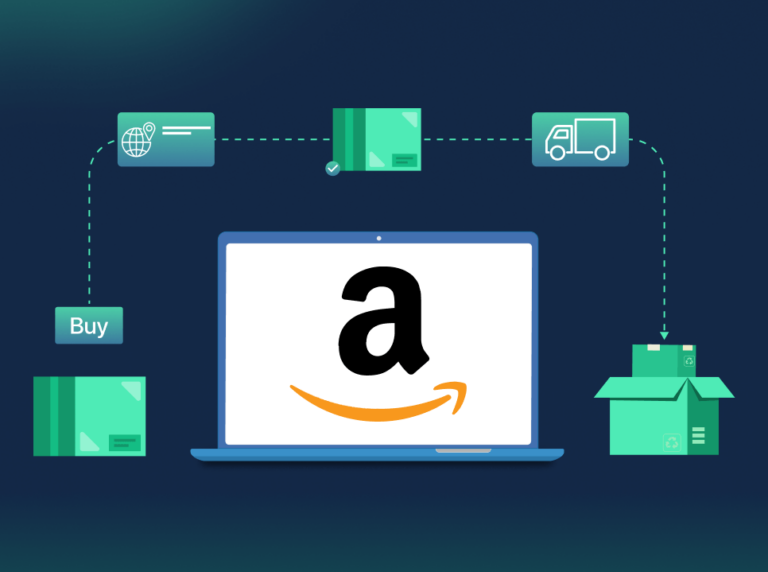A Comprehensive Guide to Data Driven Attribution Model [2023]
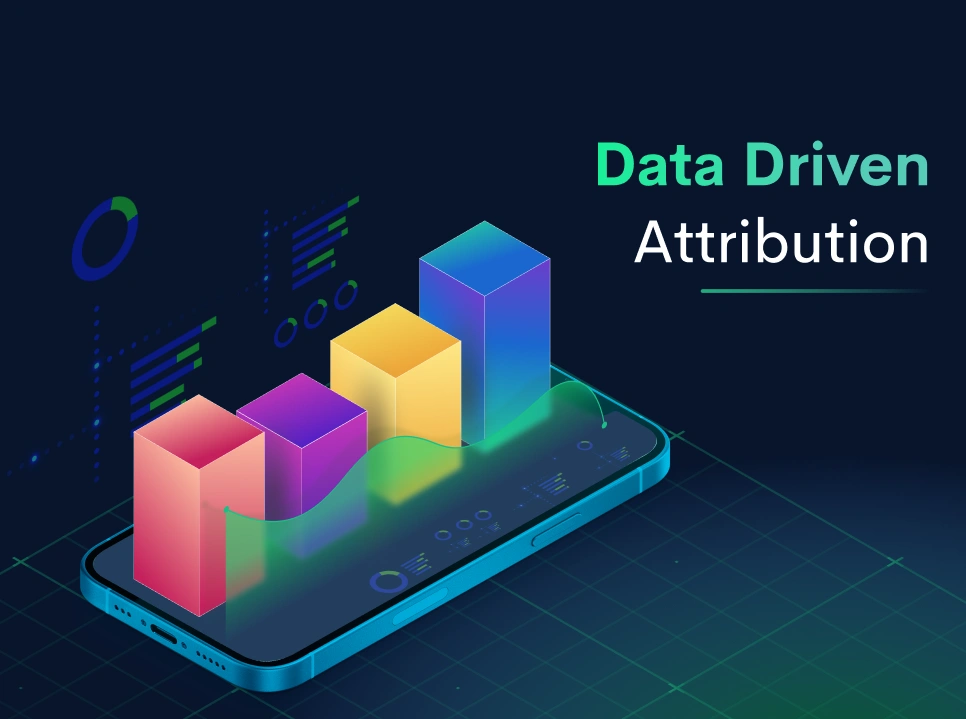
In today’s digital landscape, your brand needs to stand out among many ads across known platforms. Therefore, analyzing and optimizing your marketing campaign is a must for driving success. This is where the data driven attribution model comes into play.
This revolutionized model has become an essential method when extracting customer journeys’ valuable insights and decision-making processes. In this article, we feature the world of data driven attribution, its definition, functionality, and the numerous benefits it offers.
Let’s begin.
| 💡 Recommended reading: |
What Is Data Driven Attribution Model?
Data driven attribution model is a method of measuring the impact of different marketing channels on customer conversions based on the actual data from your account.
It uses machine learning to analyze how people interact with your ads, keywords, campaigns, and content, and assigns credit to each touchpoint according to its contribution to the conversion.
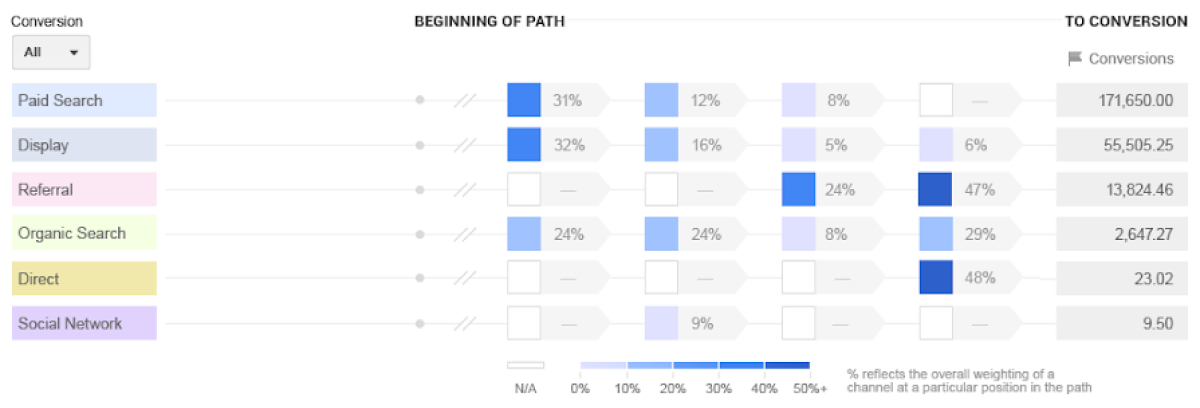
Let’s say a customer is interested in purchasing a new smartphone. They start their research by conducting a Google search and clicking on an ad. They then visit the manufacturer’s website, read reviews on a technology blog, and finally make a purchase through an online retailer.
In a data driven attribution model, each touchpoint in this customer journey would be given credit based on its influence on the eventual conversion. The initial Google search, the ad click, the website visit, the review reading, and the purchase through the online retailer would all receive appropriate credit.
Data driven attribution takes into consideration a multitude of factors, including time decay, position, and conversion paths. By doing so, it provides a much more precise and full look at marketing effectiveness.
How Does Data Driven Attribution Work?
To bring a comprehensive understanding that allows businesses to make informed decisions and optimize their marketing strategies, data driven attribution works by analyzing and interpreting data from various sources to determine the impact of different marketing touchpoints on customer conversions following these steps::
- Data Collection: The first step is to collect data from multiple sources, such as website analytics, CRM systems, advertising platforms, and more. This data includes information about customer interactions, such as ad clicks, website visits, email opens, and social media engagements.
- Data Integration: Once the data is collected, it needs to be integrated into a centralized platform or data warehouse, ensuring that all the data is organized and accessible for analysis.
- Attribution Modeling: Data driven attribution involves the use of attribution models to assign credit to different touchpoints along the customer journey. These models consider various factors, such as time decay, position, and conversion paths, to determine the influence of each touchpoint on the eventual conversion.
- Statistical Analysis: Advanced statistical techniques and algorithms are applied to the data to analyze patterns and relationships between different touchpoints and conversions. This analysis helps identify the most influential touchpoints and their respective contributions to conversions.
- Insights and Optimization: The results of the analysis provide valuable insights into the effectiveness of marketing activities. Businesses can use these insights to optimize their marketing strategies, allocate resources more effectively, and make data-driven decisions to improve overall performance.
- Iterative Process: Data driven attribution is an iterative process, meaning that it continuously learns and improves over time. As more data is collected and analyzed, the attribution models and insights become more accurate, leading to better optimization and decision-making.
Setting Up Data Driven Attribution for Your Conversions
Implementing data driven attribution for your conversions requires careful planning and execution. To set up, you need to:
- Ensure you have a solid data infrastructure in place. Integrate data from multiple sources into a centralized platform and ensure data accuracy and consistency.
- Organize your data. Make sure your data is well structured and organized for easy analysis.
- Set up tracking mechanisms. Implement tracking codes on your website and other relevant channels to capture customer interactions. Utilize UTM parameters to track the effectiveness of different marketing campaigns and touchpoints. Consider leveraging third-party tools that provide accurate data collection.
- Configure attribution models. Choose the attribution models that align with your business goals and provide meaningful insights into the effectiveness of your marketing efforts. Data-driven attribution models take into account multiple touchpoints and their impact on conversions.
- Analyze the data. Use data analysis techniques to gain insights into customer behavior and preferences. Look for patterns and correlations that can inform your marketing strategies.
- Optimize your marketing efforts. Based on the insights gained from data driven attribution, make informed decisions about resource allocation and campaign optimization. Adjust your marketing strategies to maximize impact and improve return on investment.
Why is Data Driven Attribution Better Than Other Models?
Data driven attribution has gained popularity in recent years due to its ability to provide more accurate and reliable insights compared to traditional attribution models. By leveraging advanced analytics and machine learning algorithms, data driven attribution takes into account the entire customer journey, capturing and analyzing multiple touchpoints across various marketing channels.
Here is a comparison table that highlights the key differences between data driven attribution and other models.
| Data Driven Attribution | Traditional Models | First Click Attribution | Linear Attribution |
| Considers the entire customer journey, capturing and analyzing multiple touchpoints | Relies on simplistic rules or last click attribution | Assigns all credit to the first touchpoint in the customer journey | Distributes credit equally across all touchpoints |
| Assigns appropriate credit to each interaction based on its impact on conversions | Assigns all credit to the final touchpoint before a conversion | May overvalue the first touchpoint and undervalue subsequent touchpoints | May not accurately reflect the true impact of individual touchpoints |
| Enables optimization of marketing efforts based on insights from all touchpoints | Does not consider the influence of earlier touchpoints | May not consider the influence of subsequent touchpoints | May not consider the influence of specific touchpoints |
| Offers more accurate and reliable insights | May not provide a holistic view of marketing effectiveness | May not provide accurate insights into the impact of individual touchpoints | May not provide accurate insights into the impact of individual touchpoints |
| Identifies the effectiveness of different marketing channels and campaigns | Does not provide detailed insights into channel performance | May not provide detailed insights into channel performance | May not provide detailed insights into channel performance |
As we can see, unlike other models that rely on simplistic rules or last click attribution, data driven attribution considers all touchpoints and assigns appropriate credit to each interaction based on its impact on conversions. This comprehensive approach allows marketers to gain a deeper understanding of the customer journey and make informed decisions about marketing strategies and budget allocation.
Moreover, data driven attribution provides valuable insights into the effectiveness of different marketing channels and campaigns. By analyzing the contribution of each touchpoint, marketers can identify which channels are driving the most conversions and optimize their marketing efforts accordingly. Not only does this maximize the return on investment but it also helps to uncover new opportunities for growth and expansion.
Data Driven Attribution vs. Last Click Attribution
Last click attribution has long been a popular model due to its simplicity. However, it has significant limitations that hinder its effectiveness in today’s complex marketing landscape. The model assigns all the credit to the final touchpoint before a conversion, completely ignoring the influence of earlier touchpoints. This oversimplification can lead to biased insights and inaccurate resource allocation.
Let’s take a closer look at how data driven attribution and last click attribution compare in various aspects:
| Data Driven Attribution | Last Click Attribution | |
| Consideration of the entire customer journey | Captures and analyzes multiple touchpoints | Assigns all credit to the final touchpoint before a conversion, ignores earlier touchpoints |
| Assignment of appropriate credit to each interaction | Based on the impact on conversions | Only to the final touchpoint |
| Comprehensiveness of understanding marketing effectiveness | Broad and holistic | Narrow and incomplete |
| Optimization of marketing efforts based on insights | Enabled by all touchpoints | Limited by the final touchpoint |
| Accuracy and reliability of insights | High and trustworthy | Low and biased |
| Identification of effectiveness of different marketing channels and campaigns | Detailed and clear | Lacking and vague |
| Empowerment of data-informed decisions and better business outcomes | High and positive | Low and negative |
Comparing these attributes, it is clear that data driven attribution offers a more comprehensive and accurate approach to measuring the impact of marketing efforts compared to last click attribution.
Data driven attribution takes into account the entire customer journey, assigns appropriate credit to each interaction, provides a holistic view of marketing effectiveness, and enables optimization based on insights from all touchpoints. This empowers businesses to make data informed decisions and achieve better business outcomes.
💡 When should data driven and last click attribution be used?
|
Final Words
Data driven attribution is not just a tool, but a mindset that can empower you to make data-informed decisions and optimize your marketing strategy.
By using data driven attribution, you can gain a deeper and clearer understanding of your customer journey, identify the most effective marketing channels and campaigns, and allocate your resources wisely. Don’t miss this opportunity to take your marketing strategy to the next level!
Discover what proper profit-tracking looks like at trueprofit.io

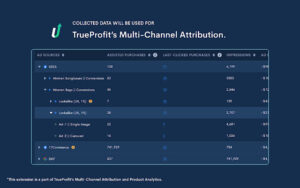
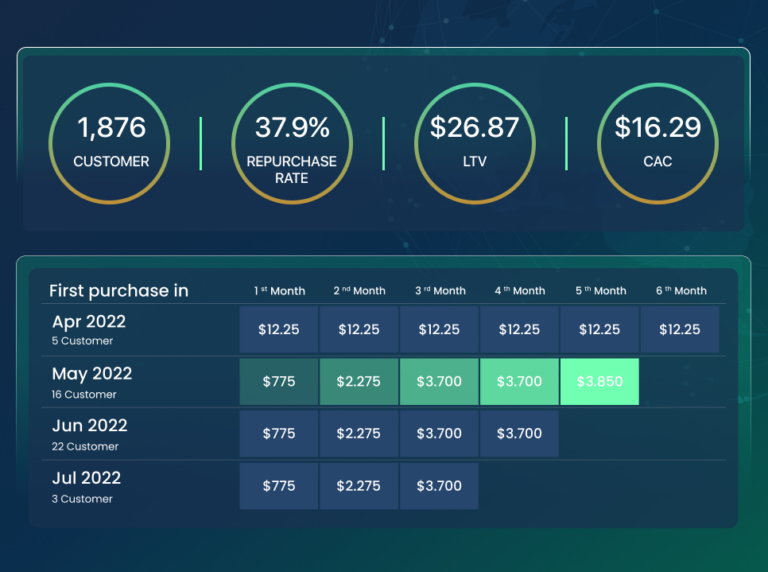
![The Complete Guidebook To Marketing Attribution [+5 Tools!]](https://trueprofit.io/wp-content/uploads/2023/09/marketing-attribution-768x572.webp)
